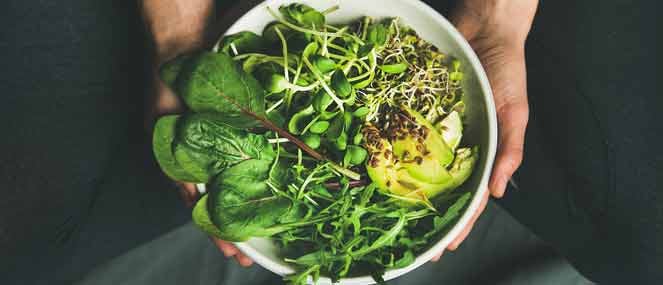
- Health hub/
- Arthritis, joint, bone & muscle/
- Joint Health Strengthening Routine to Get You Back in the Game


Our joints are what enable us to move around, bend, twist, and turn our bodies. A joint is where bones ‘join’ together, connected by ligaments and muscles for stability. Smooth tissue called cartilage and a lubricant called synovial fluid cushion the joints, so the bones do not rub against each other. This contributes to smoother and more effective movement when we walk and move around.
However, as we age, repetitive actions can lead to wear and tear of the joints, leading to pain, stiffness, and reduced mobility.
Keeping the joints healthy can help you to be able to continue your active lifestyle into your later years. Ensuring healthy joints also has a major role in preventing early-onset pain and other complications.
According to the Cleveland Clinic, keeping the joints healthy should start with reducing the wear and tear on the cartilage over time. It’s never too late to prioritise and take action towards strong joints. There are strategies to help get your joints into shape, help you move with more ease each day, and prevent joint-related injuries.
Steps to exercising to help improve mobility
Exercise can help improve mobility, reduce joint pain, and prevent stiffness of the joints. It can also help increase the strength of the muscles surrounding the joints, strengthen bones and maintain balance to prevent falls. Cleveland Clinic recommends taking part in a variety of exercises such as weight training, aerobic exercises such as walking or dancing, and flexibility exercises such as yoga and Pilates.
Joint-Friendly Exercises
Exercises gentle on the joints include swimming, cycling, or walking. They can provide cardiovascular benefits while low in impact to reduce stress on the joints.Strength Training
This helps to build the strength of the muscles surrounding the joints to provide additional protection and stability for them.
Many experts agree on doing core strengthening exercises, as these can have a positive impact on posture, which can in turn reduce pressure on the joints.
Piedmont Healthcare recommends three particular joint-strengthening exercises: pull-ups, squats, and push-ups, although there are many other strength training exercises you can also do.
The Arthritis Foundation suggests range-of-motion exercises such as stretching can help keep the muscles and ligaments flexible and strong.
If you have injured joints, it’s important to seek advice from a healthcare professional about what exercises you can safely do to prevent further injury.
Warm-Up Before Exercise
This can help prepare the joints for the demands of exercise, reducing the risk of injury and promoting flexibility.Cool Down After Exercise
Gentle stretching and relaxation exercises can help ease tension in the muscles and joints after physical activity.Stay Active Throughout the Day
Reduce time spent sedentary, by incorporating frequent, short breaks of walking around or stretching. The key is to move often to keep the joints moving and prevent stiffness. You could perhaps set an alarm for every 30 minutes to get up and move around or stretch. Stand up to take a phone call instead of sitting.Watch your posture
According to Madison Orthopedics, practising good posture by standing and sitting up straight can protect your joints. Posture is also important when lifting and carrying things. For example, ensure you put both straps of a backpack on each shoulder. Having uneven weight on one side of the body can place more stress on the joints.
This also applies to lifting objects, which should be done with the back straight, feet wide apart, and bending from the knees and hips, not the back. Try to use the biggest muscles in your body, like your legs and glutes, to prevent straining the other smaller muscle groups.
Some other tips to stay on top of your joint health
Consume a healthy diet
Avoid excess weight, which can place added stress on the joints. However, in addition to the extra weight put on the joints, according to the Arthritis Foundation, excess fat itself promotes inflammation, which can cause joint damage.
As well as staying active, eating healthy can help you maintain a healthy weight to avoid undue strain on your joints.
According to East Jefferson General Hospital, leafy greens such as lettuce, kale, broccoli and spinach are high in calcium to contribute to strong bones, which help make stronger joints.
Mason Orthopedics notes some studies suggest vitamin C, through its antioxidant activity, can help keep the joints healthy. Vitamin D and calcium can help maintain both bone and joint health.
The Arthritis Foundation recommends drinking less soft drinks, coffee, and alcohol, as these can increase excretion of calcium.
Hydration
Stay hydrated with water, to lubricate and cushion the joints.Select quality footwear
Selecting supportive footwear is important, as the wrong shoes can throw off your posture and can lead to stress placed on your joints. High heels, for example, can put extra stress on your knees, so the Arthritis Foundation recommends choosing shoes with a low or no heel and a square or rounded toe so your toes can move around. The ball of the foot where you push off should be cushioned and flexible but supportive enough so that you cannot bend the shoe in half from heel to toe. If you experience foot or knee pain, you may want to look into a shoe insert or orthotic for support, and a healthcare provider such as a podiatrist should be able to help you choose one.
REFERENCES
https://madisonorthopedics.org/how-can-i-improve-my-joint-health/
https://health.clevelandclinic.org/how-to-keep-your-joints-healthy-with-the-right-exercise




